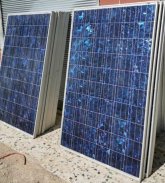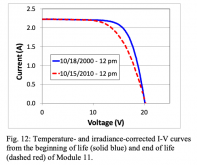A local merchant is selling solar panels that were used in solar farms,
200watts for 17$ a piece, pretty cheap isn't it?
I asked him for a picture and I've attached it to this post.
I'm really on the budget and if those can last five years it would be great.
What should I look for when I check them? Is there a manufacturing date on the back?
200watts for 17$ a piece, pretty cheap isn't it?
I asked him for a picture and I've attached it to this post.
I'm really on the budget and if those can last five years it would be great.
What should I look for when I check them? Is there a manufacturing date on the back?




